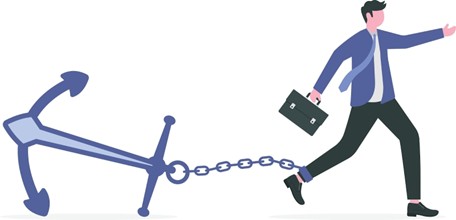TradingKey - At the end of the last century, the Japanese market was booming, and there was a widespread belief that property prices would only go up and never down. Investors, swept along by this optimistic sentiment, rushed in as they saw others making money. As a result, funds flooded into the real estate market and related stocks, causing prices to skyrocket.
Banks were also active, increasing their lending as if the entire market would never encounter any problems. But what was the outcome?
When the bubble ultimately burst, the entire economic system collapsed in a matter of moments. Japan entered a two-decade period of stagnation known as the "Lost Two Decades." This was not just an economic crisis; it became a profound lesson about human nature and psychology.
You will find that many behaviors that appear “rational” are influenced by psychological biases such as herd mentality, overconfidence, and anchoring effects.
This is precisely what behavioral finance aims to teach us: your brain is the key factor affecting your investment success or failure.
What is Behavioral Finance?
In real-world financial markets, there are often strange phenomena that cannot be explained by traditional financial theories. For instance, stock prices may experience sudden and significant fluctuations, or investors might act irrationally. As these "incomprehensible" situations become more frequent, people are starting to rethink the assumption of the “rational investor” as a flawed premise.
This is where behavioral finance comes into play.
This discipline combines theories from psychology, especially behavioral sciences, with finance.
It no longer assumes that you are a completely rational "machine investor," but instead starts from your actual psychological activities, emotional responses, and behavioral patterns to explain, study, and even predict the movements of financial markets.
In other words, behavioral finance is concerned with how you think when faced with risk and uncertainty. How do you make investment decisions? And what cognitive biases, emotional fluctuations, or social influences drive those decisions?
Simply put, it doesn’t teach you how the market should behave; rather, it tells you how people typically respond and how markets often move.

(Source: Shutterstock)
What Are the Biases in Behavioral Finance?
1. Overconfidence
To be honest, in the investment market, who hasn’t felt a bit of “I can do this” confidence? However, be cautious; overconfidence is like a double-edged sword—it can propel you confidently into the market, but it can also lead to severe pitfalls without you even realizing it.
Many investors tend to overestimate their judgment and believe they understand the market better than others and can seize trading opportunities more effectively.
They often think they can accurately predict stock price fluctuations, leading them to trade frequently and even venture into high-risk areas they are not familiar with.
For instance, after making several consecutive profitable trades, some people become overly confident and think, “I have mastered the secret of investing,” then drastically increase their positions and trading frequency.
What happens next? When the market suddenly shifts, they could find themselves caught off guard.
2. Loss Aversion
Even when a stock has already lost significant value, you may hesitate to sell it, thinking, “If I wait a bit longer, it will bounce back.”
This is a classic example of loss aversion at play.
People are naturally more pained by losses than they are pleased by equivalent gains.
Consequently, during losses you may hold on stubbornly in hopes of breaking even, while during gains you might take profits too early out of fear that those gains will evaporate.
3. Herding Effect
When everyone around you is talking about a hot stock or popular sector, do you find yourself tempted to jump on the bandwagon?
Even if you haven’t thoroughly researched the company or don’t know if it’s worth investing in at all.
This illustrates the power of herd mentality. People tend to believe that "the decisions made by so many others must be correct.”
However, in reality, by the time you realize what's happening and react accordingly, the market may have already changed.

(Source: Shutterstock)
4. Anchoring Effect
One day, you notice a stock that you had been following a few days ago has dropped significantly, and you excitedly say, “This stock was once 100; now it is only 50. It must be cheap! I need to buy in quickly!”
In such situations, you might be affected by the "anchoring effect."
The anchoring effect refers to your tendency to rely too heavily on the initial piece of information as a reference point for your judgments.
For example, if you remember that a stock once rose to 100 and now is at 50, you might consider it "undervalued."
But have you considered why its price dropped? Is it due to industry conditions or a deterioration in the company's operations?
If the fundamentals have changed, then even $50 could still be too expensive.

(Source: Shutterstock)
5. Confirmation Bias
We all tend to fall into the trap of confirmation bias—you only pay attention to information that supports your existing beliefs while automatically ignoring voices that contradict your viewpoint.
For instance, if you are optimistic about a company’s stock and believe it will rise significantly in the future, you'll focus particularly on positive news about it, like quarterly earnings exceeding expectations or management announcing plans for new business expansions.
Conversely, when negative news arises—such as product issues or declining market share—you might choose to ignore it or come up with rationalizations for past performance.
On the other hand, if you've initially taken a bearish stance on that company, no amount of good news may change your mind.
This mentality can make you increasingly stubborn in your judgments, even as market conditions quietly shift around you.
Over time, this leads to a skewed understanding of the market and makes it difficult to maintain rational investment decisions.
How Psychological Factors Quietly Change Market Dynamics?
Sometimes, stock prices fluctuate wildly, yet you can't find any substantial positive or negative news to explain the movement.
In reality, much of this may be driven by the psychology of investors like you and me.
For example, overconfidence can lead you to believe that you can always time your trades perfectly, resulting in frequent trading.
This behavior not only increases the overall activity in the market but also causes sharp and rapid price movements.
Another example is loss aversion. When stock prices decline, you may be unwilling to cut your losses, thinking, “If I wait a bit longer, I’ll break even.”
But once you make some profit, you're quick to cash out. This behavior of stubbornly holding onto losses while rapidly taking profits disrupts the supply-demand rhythm of the market and makes prices even more volatile.
In other words, market fluctuations often occur not because fundamentals have changed but because people's mindsets have shifted.
How Are Bubbles Inflated? How Do Crashes Occur?
Do you remember those sudden surges followed by equally sudden drops in stock prices? Wasn't it true that many people around you were buying at that time, and you found it hard to resist joining in?
This is a classic example of herd mentality, also known as the “herding effect.” When everyone is moving in one direction, it becomes difficult to stand apart from the crowd.
You might not realize that each time you buy or sell contribute to this frenzy and inadvertently set off subsequent stampedes.
How to Overcome Psychological Biases and Optimize Investment Decisions?
Stay Committed to Learning and Remain Calm
Many investment errors arise from insufficient knowledge. You may believe you understand the market well, but you might only be observing a small portion of what’s truly there.
To reduce overconfidence that arises from the belief of “I think I can do it,” the most fundamental approach is continuous learning.
Understanding the mechanisms of financial markets, mastering basic investment strategies, and risk management methods will not only give you more confidence but also help you identify those irrational impulses lurking in your mind.
Knowledge is your first line of defense against biases.
Establish a Strict Investment Plan
An investment plan should clearly define your investment goals, risk tolerance, asset allocation ratios, and trading timing.
You need to strictly adhere to this plan to avoid being swayed by emotions and short-term market fluctuations.
Don’t let emotions make decisions for you.
When you have clear rules in place, even in the face of market volatility, you'll find yourself hesitating less and remaining calm more often.
Think Independently and Avoid Following the Herd
Cultivate independent thinking skills without blindly following market trends or others’ investment advice.
Remember that just because others are making money doesn’t mean you will as well, especially if you're entering at a high price point.
Rather than following the crowd mindlessly, spend time understanding the company you genuinely want to invest in.
How is its business performing? Is its financial situation sound? What does its industry outlook look like? The answers to these questions are far more important than “everyone else is buying.”
By thinking independently, investors can more objectively assess investment value, avoid herd mentality and anchoring effects, and make decisions aligned with their best interests.


